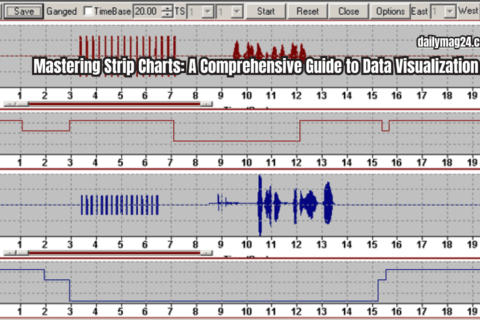Introdution to Rattle market
In finance, the term “rattle market” refers to events or conditions that cause significant fluctuations in market prices, often leading to uncertainty and concern among investors. To rattle markets means to disrupt the stability of financial markets, leading to sharp price movements, increased volatility, and heightened investor anxiety. This can occur due to various factors, including economic data releases, geopolitical events, changes in monetary policy, or unexpected corporate earnings reports. When markets are rattled, investors may react by buying or selling assets, which can further exacerbate price swings.
Key Factors That Rattle Markets
Understanding the factors that can rattle markets is crucial for investors. Here are some of the primary contributors to market volatility:
1. Economic Indicators
Economic indicators are statistical data that provide insights into the overall health of an economy. Key indicators include:
- Gross Domestic Product (GDP): A decline in GDP can signal a recession, leading to decreased investor confidence and market sell-offs.
- Unemployment Rates: Rising unemployment can indicate economic weakness, prompting concerns about consumer spending and corporate profitability.
- Inflation Rates: High inflation can erode purchasing power and lead to increased interest rates, which can negatively impact stock prices.
- Consumer Confidence Index (CCI): A drop in consumer confidence can lead to reduced spending, affecting corporate revenues and stock valuations.
2. Geopolitical Events
Geopolitical events, such as wars, political instability, and trade disputes, can create uncertainty in financial markets. For example:
- Ukraine War: The ongoing conflict in Ukraine has led to sanctions on Russia, affecting global energy prices and supply chains. This uncertainty can cause market fluctuations as investors react to news and developments.
- Trade Wars: Tariffs and trade restrictions can disrupt global supply chains, leading to increased costs for businesses and affecting their profitability.
- Elections and Political Changes: Political uncertainty, especially during elections, can lead to market volatility as investors speculate on potential policy changes.
3. Central Bank Policies
Central banks play a crucial role in shaping market conditions through their monetary policies. Changes in interest rates, quantitative easing, or tightening can significantly impact financial markets:
- Interest Rate Changes: When central banks raise interest rates to combat inflation, borrowing costs increase, which can slow economic growth and lead to lower stock prices.
- Quantitative Easing: Conversely, when central banks implement quantitative easing to stimulate the economy, it can lead to increased liquidity in the markets, driving asset prices higher.
- Forward Guidance: Central banks often provide guidance on future policy intentions. Unexpected changes in this guidance can lead to market volatility as investors adjust their expectations.
4. Corporate Earnings Reports
Earnings reports provide insights into a company’s financial performance and can significantly impact stock prices. Factors include:
- Earnings Surprises: Companies that report earnings above or below analyst expectations can see their stock prices fluctuate dramatically.
- Guidance: Companies that provide optimistic or pessimistic future guidance can influence investor sentiment and market movements.
- Sector Performance: Weak performance in key sectors, such as technology or finance, can lead to broader market declines.
Historical Examples of Rattled Markets
To illustrate how various factors can rattle markets, let’s look at some historical examples:
The 2008 Financial Crisis
The global financial crisis of 2008 was triggered by the collapse of the housing market and the failure of major financial institutions. Key factors included:
- Subprime Mortgages: The proliferation of risky mortgage products led to widespread defaults, causing significant losses for banks and investors.
- Lehman Brothers Collapse: The bankruptcy of Lehman Brothers sent shockwaves through the financial system, leading to a severe credit crunch and market panic.
- Government Intervention: The U.S. government and Federal Reserve intervened with bailouts and stimulus measures to stabilize the economy, but the market experienced significant volatility during this period.
The COVID-19 Pandemic
The onset of the COVID-19 pandemic in early 2020 rattled global markets as uncertainty about the virus’s impact on the economy grew. Key events included:
- Market Crash: In March 2020, stock markets worldwide experienced rapid declines, with the S&P 500 dropping approximately 34% in just a few weeks.
- Government Response: Governments implemented lockdowns and stimulus measures, leading to a volatile recovery as investors reacted to changing conditions.
- Vaccine Developments: The announcement of effective vaccines in late 2020 led to a rapid market rebound, highlighting the importance of news and developments in shaping investor sentiment.
Strategies for Navigating Rattled Markets
While market volatility can be unsettling, there are strategies investors can employ to navigate these turbulent times:
1. Diversification
Diversifying your investment portfolio can help mitigate risk during periods of market volatility. By spreading investments across different asset classes, sectors, and geographic regions, investors can reduce the impact of poor performance in any single area.
2. Long-Term Perspective
Maintaining a long-term investment perspective can help investors avoid making impulsive decisions based on short-term market fluctuations. Historically, markets have tended to recover from downturns, and staying invested can lead to better long-term returns.
3. Stay Informed
Keeping abreast of economic news, market trends, and geopolitical developments can help investors make informed decisions. Understanding the factors that influence market movements can provide valuable context for investment choices.
4. Risk Management
Implementing risk management strategies, such as setting stop-loss orders or using hedging techniques, can help protect investments during volatile periods. These strategies can limit potential losses and provide a safety net for investors.
5. Consult with Professionals
Working with financial advisors or investment professionals can provide valuable insights and guidance during turbulent market conditions. They can help develop tailored investment strategies that align with individual risk tolerance and financial goals.
Conclusion
Understanding what rattles markets is crucial for investors seeking to navigate the complexities of the financial landscape. By recognizing the factors that contribute to market volatility, such as economic indicators, geopolitical events, central bank policies, and corporate earnings reports, investors can make informed decisions and develop effective strategies for managing risk.While market fluctuations can be unsettling, maintaining a long-term perspective and staying informed can help investors weather the storms and achieve their financial goals.
FAQs
What does it mean to rattle markets?












